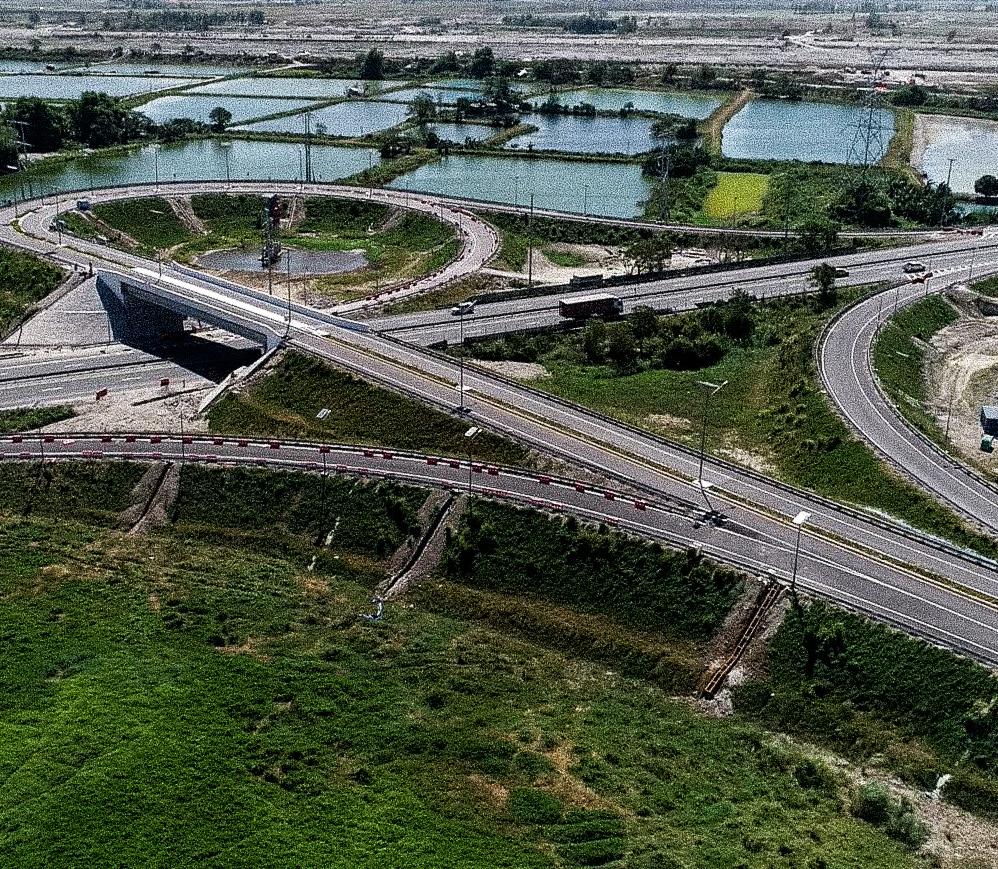
3 minute read
BUILDING A PROGRESSIVE PHILIPPINES
If there is a catch phrase that is synonymous with the Duterte Administration it would be Build, Build, Build.
The phrase is not only extremely easy to recall, the vision and progress behind it will most likely be remembered for decades to come.
Advertisement
This collection of game-changing infrastructure projects, to which 5.3% of the GDP this year was allocated (International Monetary Fund, 2020), aims to make compelling progress to the country’s airports, railways, highways, and other such infrastructure networks. Progress that will ultimately result in not just the creation of additional jobs but also in fast-tracked developments outside of densely populated cities in the Metro. This has been one of President Duterte’s chief objectives with this program: countryside development and the distribution of progressive economic activity across the country, not just its capital cities.
Two prime BCDA projects that make up a major part of the Build, Build, Build plan are the New Clark City and the Clark International Airport New Passenger Terminal Building which was an immense undertaking that was completed in record time. This, despite time-consuming safety protocols that were strictly followed to ensure the safety of every single person involved in the construction. The two other projects in the works are the Subic-Clark Railway and the Luzon Bypass Infrastructure.

SUBIC-CLARK RAILWAY
A BIG BOOST TO THE ECONOMY

This single-track 71-kilometer railway shall, at the onset of operations, connect Subic Bay Freeport Zone to the Clark International Airport. Approved by the National Economic and Development Authority (NEDA) Board in 2018, this railway’s ultimate goal is to link Subic Bay Freeport Zone and Clark Freeport Zone. As part of the PNR Luzon System Development Framework, it will connect Subic Port to Clark International Airport, accommodate freight services between the Freeports of Subic Bay and Clark, and create convenient and faster accessibility to other major economic hubs in Central Luzon such as New Clark City. Funded through a loan from the People's Republic of China, it shall serve as a wellplanned logistics center that will elevate Central Luzon’s status as a new growth center by ultimately bridging the distance between ports, railways and airports. The Subic-Clark Railway aims to streamline and improve logistics capabilities while significantly lowering transportation costs and thus, create a logistics demand for freight services in the area, thereby propelling Central Luzon as a popular industrial investment destination globally.
LUZON BYPASS INFRASTRUCTURE PROJECT
FASTER INTERNET SPEED & FREE WI-FI IN PUBLIC SPACES

Now more than ever, Internet speed is vital to the progress of the nation. However, according to Speedtest Global Index, the Philippines logs the second slowest Internet speed in ASEAN and ranks 100th among 139 countries. The main reason for this could be that submarine communication cables passed through Luzon Strait, a 250-kilometer-wide body of water that is an earthquake-prone area with a long history of seismic activity. This has caused considerable damage to the cables over the years, resulting in slow Internet speed and billions of pesos in damages yearly. The Luzon Bypass Infrastructure (LBI) Project—a partnership between the Bases Conversion and Development Authority (BCDA, who built the LBI) and the Department of Information and Communications Technology (DICT), the agency in charge of operating and maintaining the facilities— serves as a safe substitute pathway for international submarine cables. This is composed of two cable landing stations located in Aurora, Baler and San Fernando, La Union, repeater stations, and a 245-km fiber-optic cable duct network. The construction of the terrestrial of the cable network corridor Segment A (Aurora to Pangasinan), and the terrestrial of the cable network corridor Segment B (La Union to Pangasinan) is 100% complete as of March 2020. The certificate of completion and final acceptance for the terrestrial of Cable Network Corridor was issued on October 1, 2020 for Segment A, and on October 7, 2020 for Segment B.








